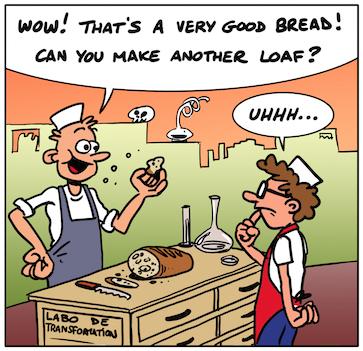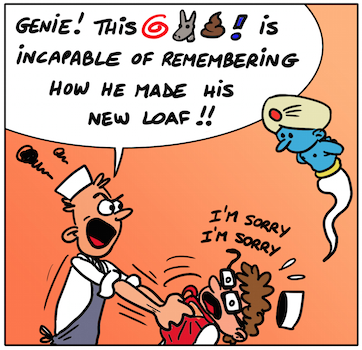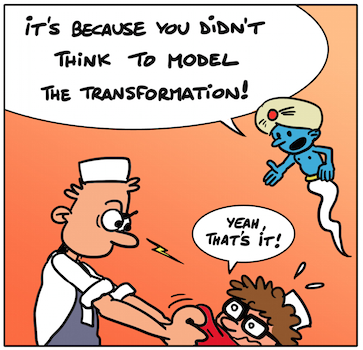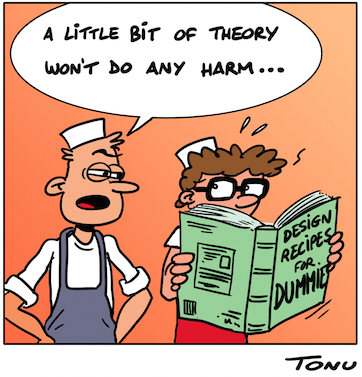-
The need for a Transformation Model
Innovation itself certainly calls for imagination and creativity. But, to be effective, it must also base itself on a method, Tools, rigor, a definition of each person's Role, traceability, in short on a "Transformation Model" which describes how to Transform well.
-
The Transformation Model is different from the Operation Model
The Transformation Model is decomposed, like the Operation Model, into an Actor Model, Action Model and Information Model.
- the Human-Actor Model formalizes the Roles of the "Strategist", "Project Manager", "Architect", "Contracting Owner", "trainer",... that is to say all the Human-Actors who contribute to the Transformation.
- the Action Model formalizes the Processes (e.g., "Build a Solution", "deploy a Solution", "design a Product"...) or the Functions that make up the Processes ("describe a Problem", "Evaluate a project timescale", "Test a Function"). This is what we usually call "methodology" or "Approach".
- the Information Model formalizes the Transformation
Objects such as
Project, Test, Schedule...
But this Model must be adapted to the risky and complex nature of the Transformation.
As much as the Operation Models should be rigorously defined to guarantee efficient and standardized Production and Distribution, the Transformation Models should leave some freedom, the possibility to proceed by trial and error and to iterate, and to reserve a large share linked to testing and training... The difficulty is finding the right balance between Modeling rigor and the freedom to innovate.
-
Summary of the Enterprise Model
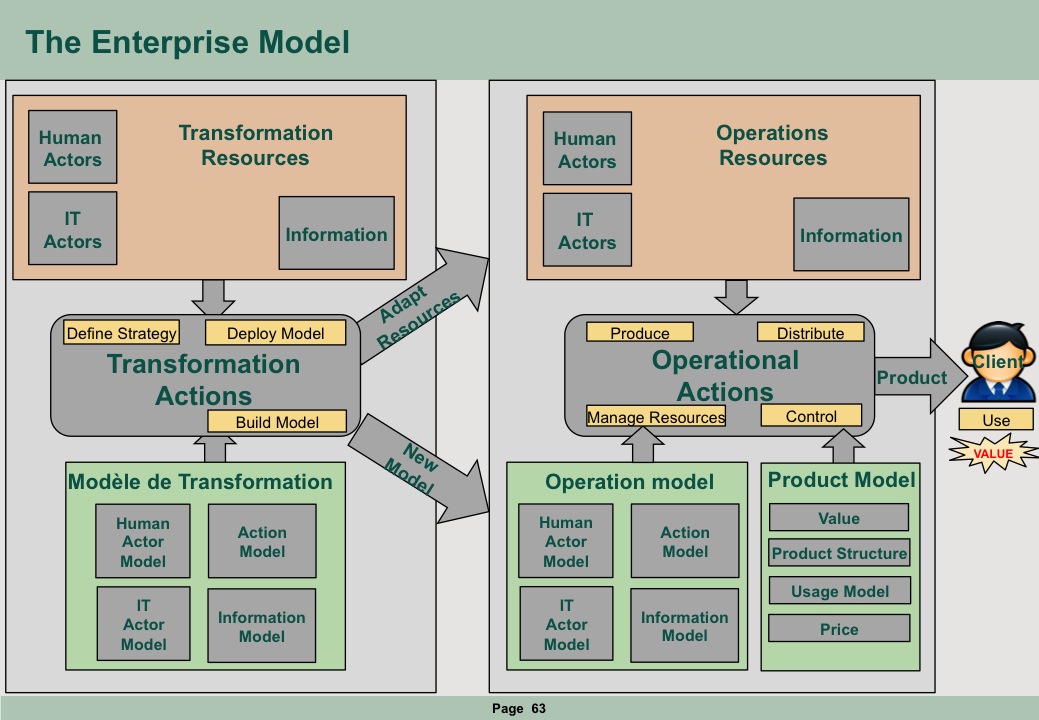

The story of George the Baker is made available under the terms of the
Creative Commons Attribution - NoDerivatives 4.0 International license.
